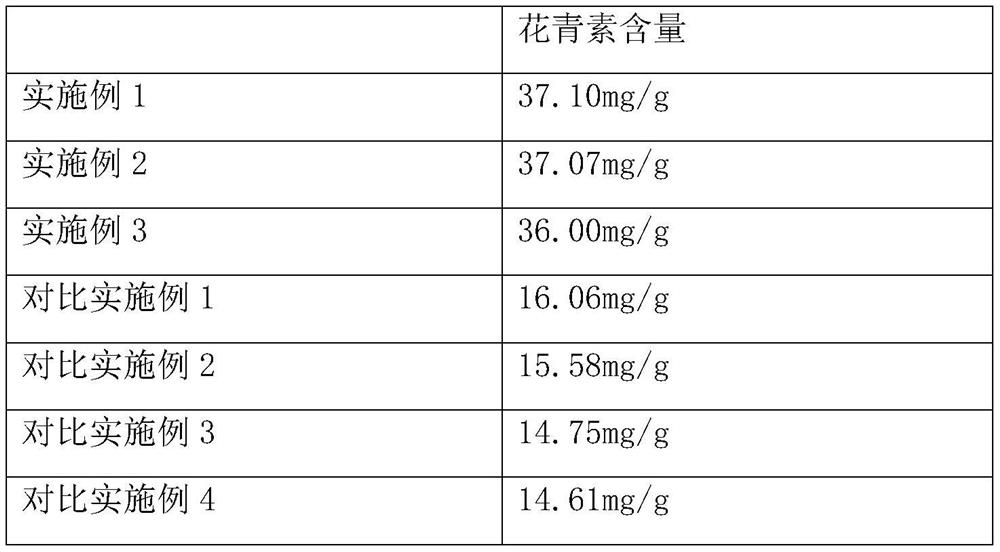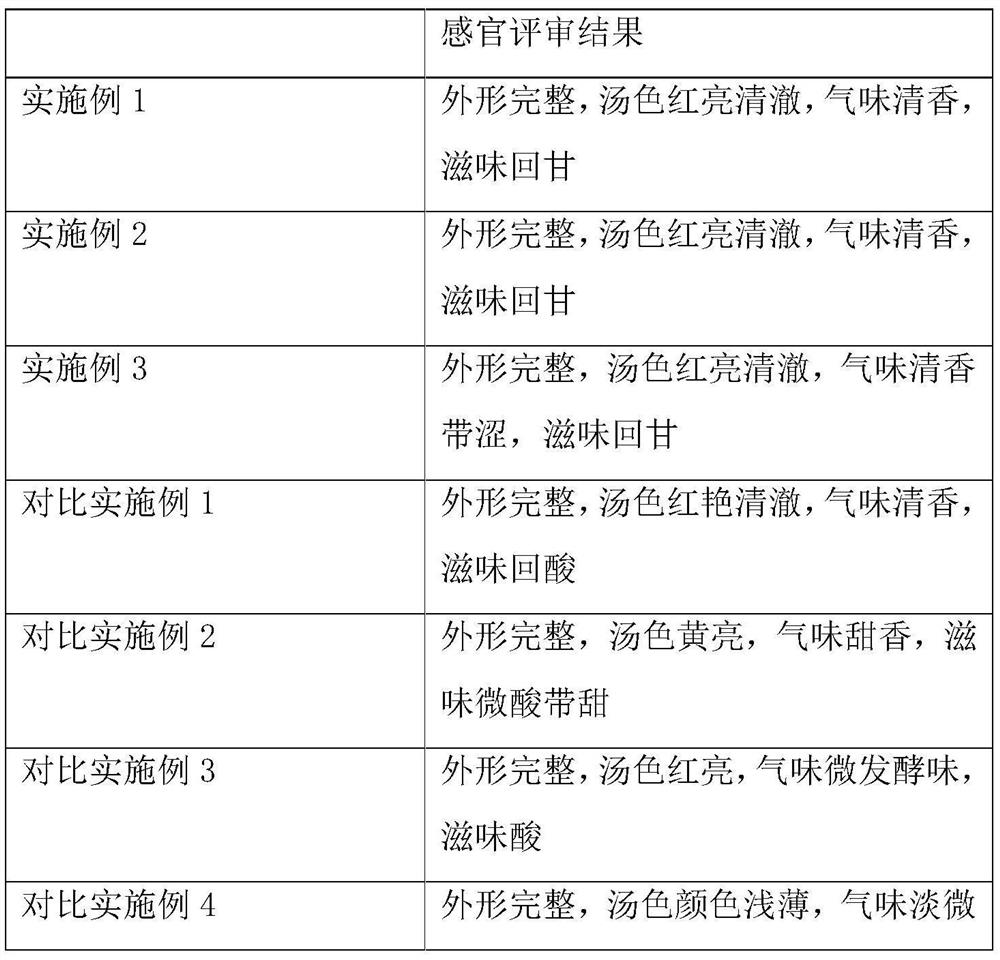Method for increasing content of procyanidine in Cascara
A technology of anthocyanin content and peel tea, which is applied to bacteria, tea substitutes, lactobacilli and other directions used in food preparation, can solve problems such as large loss of proanthocyanidins.
- Summary
- Abstract
- Description
- Claims
- Application Information
AI Technical Summary
Problems solved by technology
Method used
Image
Examples
Embodiment 1
[0021] A method for improving proanthocyanidin content in coffee peel tea, specifically comprising the following steps:
[0022] (1) Choose fresh coffee cherries of the same maturity, wash, dry, and peel the peeled coffee cherries, and then crush the peeled coffee cherries for later use.
[0023] (2) Activate the purchased Lactobacillus acidophilus, insert it into MRS liquid medium, culture it at 37°C for 24h, then centrifuge it at 4000r / min for 10min, wash the precipitated colony with sterile saline, and then dissolve it in In distilled water, prepare a bacterial suspension with a viable count of 2.6×109 CFU / mL.
[0024] (3) Add yeast extract to the coffee peel obtained in step (1) to supplement nitrogen source, add sucrose to supplement carbon source, then homogenize, adjust pH to 4, inoculate Lactobacillus acidophilus in a ratio of 6% by mass percentage, and cultivate until the number of live bacteria is 10 9 CFU / mL is considered as the end point of fermentation.
[0025...
Embodiment 2
[0027] A method for improving proanthocyanidin content in coffee peel tea, specifically comprising the following steps:
[0028] (1) Choose fresh coffee cherries of the same maturity, wash, dry, and peel the peeled coffee cherries, and then crush the peeled coffee cherries for later use.
[0029] (2) Activate the purchased Lactobacillus acidophilus, insert it into MRS liquid medium, culture it at 37°C for 24h, then centrifuge it at 4000r / min for 10min, wash the precipitated colony with sterile saline, and then dissolve it in In distilled water, prepare a bacterial suspension with a viable count of 2.6×109 CFU / mL.
[0030] (3) Add yeast extract to the coffee peel obtained in step (1) to supplement the nitrogen source, add sucrose to supplement the carbon source, then homogenize, adjust the pH to 5, inoculate Lactobacillus acidophilus at a ratio of 5% by mass, and cultivate until the number of live bacteria is 10 9 CFU / mL is considered as the end point of fermentation.
[003...
Embodiment 3
[0033] A method for improving proanthocyanidin content in coffee peel tea, specifically comprising the following steps:
[0034] (1) Choose fresh coffee cherries of the same maturity, wash, dry, and peel the peeled coffee cherries, and then crush the peeled coffee cherries for later use.
[0035] (2) Activate the purchased Lactobacillus acidophilus, insert it into MRS liquid medium, culture it at 37°C for 24h, then centrifuge it at 4000r / min for 10min, wash the precipitated colony with sterile saline, and then dissolve it in In distilled water, prepare a bacterial suspension with a viable count of 2.6×109 CFU / mL.
[0036] (3) Add yeast extract to the coffee peel obtained in step (1) to supplement the nitrogen source, add sucrose to supplement the carbon source, then homogenize, adjust the pH to 4.5, inoculate Lactobacillus acidophilus at a ratio of 4% by mass, and cultivate until the number of live bacteria is 10 9 CFU / mL is considered as the end point of fermentation.
[0...
PUM
 Login to View More
Login to View More Abstract
Description
Claims
Application Information
 Login to View More
Login to View More - R&D
- Intellectual Property
- Life Sciences
- Materials
- Tech Scout
- Unparalleled Data Quality
- Higher Quality Content
- 60% Fewer Hallucinations
Browse by: Latest US Patents, China's latest patents, Technical Efficacy Thesaurus, Application Domain, Technology Topic, Popular Technical Reports.
© 2025 PatSnap. All rights reserved.Legal|Privacy policy|Modern Slavery Act Transparency Statement|Sitemap|About US| Contact US: help@patsnap.com



